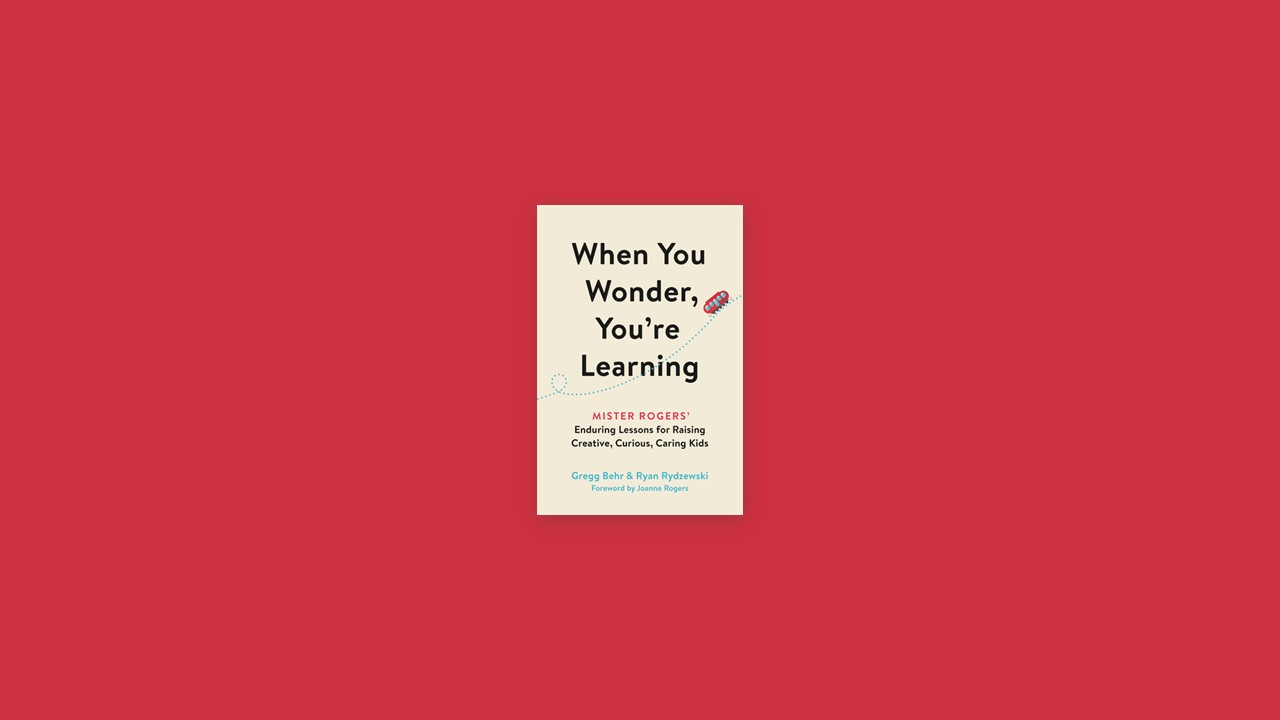When You Wonder, You’re Learning Curiosity
When kids are in a state of wonder, they’re more likely to retain what they see, hear, and experience. Pay attention to what elicits children’s curiosity—when their interest is piqued, their brains are primed for learning. When kids ask why the wind blows or why leaves change color in the fall, it’s sometimes helpful to ask open-ended questions in return, especially if you’re not entirely sure of the answer yourself. The process of discovery can be just as important as finding the factually correct answer. Adults and children can launch lines of inquiry together simply by wondering aloud—asking why and what if. “What if we put grapes in our pancakes rather than blueberries?” Or, “Why do we need to put more air into the soccer ball?” Or, “What’s inside of this toy?”
Kids can “catch” curiosity, so it’s important for them to see adults indulging interests of their own. What makes you curious? What do you love to do, and why? If you’re not sure, this is a great excuse to reexamine old hobbies—to pull out those abandoned paintbrushes or dust off that old guitar. It’s also helpful to verbalize your questions and thoughts: “I wonder what would happen if I mix these colors together.” Or, “How does this knob change an instrument’s sound?”
It can be difficult for kids (and adults) to let go of the expectation that everything they encounter is part of a project that needs to be finished or done in a certain way. Be patient and encourage kids to examine things on their own terms. It can take time and even a bit of practice to let their curiosity flourish. Let them rebuild that LEGO creation without the instructions—or ask them to add something unexpected.
Mud Pies and Block Buildings Creativity
Creativity, scientists say, is about more than drawing pictures or shaping pots or making spoons. It’s about putting boards under spinning tires, turning paper cups into telephones, and—one day—meeting the challenges of climate change and poverty. It’s about taking the knowledge and ideas and feelings that exist in the world already and making them more useful to ourselves and our neighbors.
Creativity isn’t just for kids—that even with their busy schedules and jangled nerves, adults paint portraits and shape clay and make up stories, too. It shows kids they don’t have to give up their mud pies or block buildings, even when the world seems to scoff at them. And it shows them that the point of painting and drawing isn’t to make a masterpiece or be the best at something but rather to make our souls grow—to become more fully ourselves.
The best way to raise creative kids may be to show them that we, as adults, value creativity, too. Scientists have found that imaginative kids are more likely to have imaginative parents—people who consider themselves adventurous and open-minded. This holds true even beyond the fourth-grade slump; creative older kids are more likely to say their parents told them stories or engaged in make-believe with them. In fact, parents’ emphasis on imaginativeness can predict their children’s creativity even years down the road.
It All Works Out If You Talk and You Listen Communication
Sometimes, when the weights we carry grow heavy, what we need more than anything is someone who’s willing to listen. Sometimes it’s an old friend. Sometimes it’s a spouse, a parent, or a neighbor. Sometimes it’s a professional—there’s a reason Americans spend tens of billions of dollars a year on mental health treatment, including counseling. It feels good to talk, even when our listeners can’t solve our problems or take away our pain.
This is what Thich Nhat Hanh means by deep listening: the patient act of ensuring that someone feels acknowledged, valued, and heard. Deep listening can take lots of forms, but in every case, it’s rooted in compassion rather than criticism. “When we listen to someone with the intention of helping that person suffer less, this is deep listening,” Nhat Hanh writes. “When we listen with compassion, we don’t get caught in judgment. A judgment may form, but we don’t hold on to it.”
This means listening to children uncritically, at least at first. For parents, it’s sometimes a tall order—we’re criticizing, lecturing, advice-dispensing creatures. It’s in our DNA. Though we don’t always differentiate between children’s feelings and children’s behavior, it’s possible, even necessary, to empathize with the former before reacting to the latter. Like everyone else, children withhold their feelings when they fear they’ll be shamed, punished, or worse for expressing them.
when we make a point of listening more than we talk, we’ll sometimes find that listening is enough on its own. We don’t always have to act or give advice or have something meaningful to say. When your daughter’s upset or won’t get dressed, they’re not necessarily seeking solutions. Sometimes, they just want someone to hear them.
“When your loved one is suffering,” writes Nhat Hanh, “your impulse may be to want to do something to fix it, but you don’t need to do much. You just need to be there for him or her. That is true love.”
Appreciation Is a Holy Thing Working Together
Today, nearly nine out of ten workers spend at least a third of their time in teams, and in survey after large-scale survey, employers consider the ability to work with others a top qualification. Some companies have even hired chief collaboration officers, while others are finding new ways to reward their top team players. The glass-and-ceramics manufacturer Corning, for example, names select employees “fellows,” guaranteeing them jobs for life. To become a fellow, employees have to not only author a multimillion-dollar patent—they have to help their colleagues do the same
Predictably, people who work well with others tend to punch above their weight. You can be the most curious molecular biologist or the most creative jazz drummer on the planet, but if you can’t collaborate, you’re not likely to get very far.
The same thing goes for kids. Learning scientists have long known that something powerful happens in social, collaborative settings, partly because hearing and generating language helps forge new neural pathways. The very act of discussing ideas, articulating difficult concepts, and hearing other people’s perspectives can rewire children’s brains and deepen their understanding. In one study, scientists randomly assigned students to complete a science unit in groups or on their own. After a few weeks, kids who’d gone through the unit in groups outperformed their peers on every single assessment. Even better, the students who’d scored lowest at the unit’s outset showed the greatest gains by the end.
on teams that have established psychological safety—that is, “a sense of confidence that the team will not embarrass, reject, or punish someone for speaking up”—team members feel safe to ask questions and admit mistakes. They feel safe to be themselves: to voice dissent, seek clarification, and ask for help when they need it. And the learning that results almost always boosts outcomes for everyone.
We should note here that psychological safety does not mean the absence of conflict. On the contrary, psychological safety can make conflict more likely, because team members feel free to voice dissent. Properly handled, however, conflict can improve the final outcome.
It’s You Who Have to Try It and It’s You Who Have to Fall (Sometimes) Learning and Growing
Mistakes, after all, are the things that power our learning. In fact, at the biological level, that’s what learning is: a series of new neural pathways born of silent (and sometimes not-so-silent) struggle. Making mistakes—and then correcting them—is how we grow our brains and make new connections.
Very young children seem to get this. They struggle to walk for weeks or months, getting up, falling down, and trying again unfazed. They’re relentless to the point of recklessness, sometimes to their own delight and their parents’ dismay. They’re simply doing what they’re designed to do—explore the world’s surprises with wonder and joy, mistakes and bruises and scrapes be damned.
The effects of struggle on learning have been well documented. “Being forced to generate answers improves subsequent learning even if the generated answer is wrong,” writes David Epstein in Range. “It can even help to be wildly wrong.… The more confident a learner is of their wrong answer, the better the information sticks when they subsequently learn the right answer. Tolerating big mistakes can create the best learning opportunities.”
It can also create learners who are more willing to stick with difficult challenges. When kids see mistakes and struggles as markers on the path toward mastery, learning becomes more exciting than scary. Setbacks become more intriguing than disappointing.
Of course, even kids who like to struggle will still find themselves frustrated. Making and accepting mistakes is one thing; learning from them is something else entirely. For that, kids need loving adults who’ll talk to them honestly about their shortcomings and failures and who’ll help them determine what it will take to succeed.
Likewise, it’s important to value the process and the outcome and to show kids that they’re inextricably linked. When we want a child to swim, we don’t just drop her in the deep end and hope for the best. Nor do we give her a trophy for simply getting into the pool. Instead, we stand at her side and support her unconditionally as she tries different ways of keeping afloat.
Learning from mistakes takes persistence, and one of the best ways to encourage that is to comment on how children are working on something, not just what they’re making.


